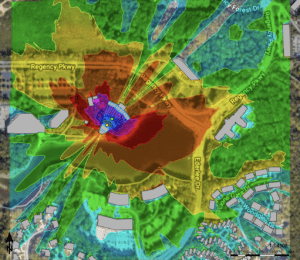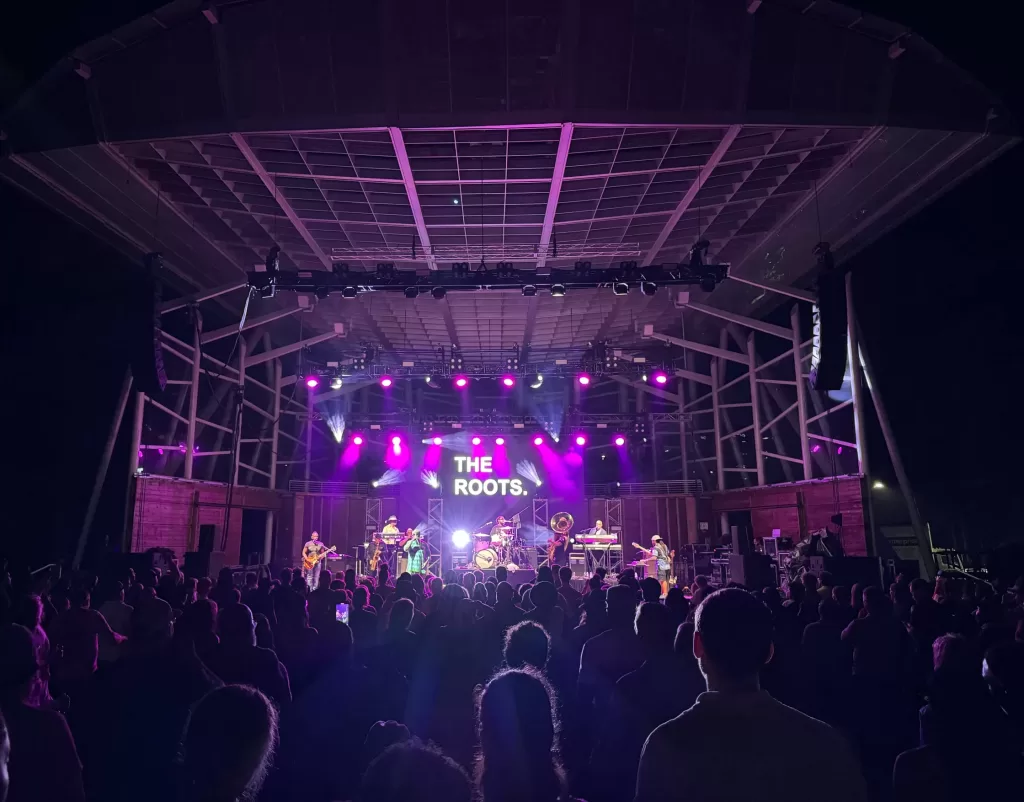The challenge
When designing a sound system for an outdoor venue, you have two audiences: the showgoers, who paid to be there, and the surrounding neighbors, who didn’t. The challenge is designing a sound system that keeps both in mind.
It was a humid day in late August as The Roots and Macy Gray flew in to play the Koka Booth Amphitheater. This venue is a 7000 capacity venue in Cary, North Carolina. As an outdoor venue, a common challenge is ensuring everyone in the venue has a similar listening experience. This includes preventing overflow sound in the neighboring communities. With regulated decibel limits, the city can issue citations if it’s too loud in the neighboring areas. This is why it was important that we understood the space we were working in. To start, we utilized d&b audiotechnik’s NoizCalc, a software that analyzes the audio system’s performance in a given area.
What is NoizCalc?
Our friends over at d&b audiotechnik, explain NoizCalc like this:
“NoizCalc itself was developed in partnership with SoundPlan, a specialist software developer for environmental noise prediction. They are considered the foremost experts in the study of noise emission studies in the EU, and run noise pollution modeling calculations for all the trains and interstates/highway construction projects throughout Germany.” (https://www.soundplan.eu/en/)

Multiple industries consider this software to be a great tool for anticipating noise pollution. While NoizCalc isn’t total prevention, it predicts where sound will go so you can better design the system for the venue- even natural, asymmetrical ones like the Gorge Amphitheater in George, Washington. Venues (and artists!) everywhere have a reason to invest in better, higher-quality sound systems. If an attendee has a bad listening experience, they might attribute it to the venue itself, affecting their choice to come back.
Designing the sound system
After utilizing NoizCalc, we made adjustments to the system that ensured the best listening experience for everyone. Armed with just four d&b SL-Subwoofers and tuning the system with the magic of d&b’s ArrayProcessing, we set out. There were external doubts that the system would be enough for the venue’s capacity, but we trusted the process. Not only were the 4 SL-subs enough for the audience, but the cardioid speaker pattern allowed for minimal stage noise with the subwoofers placed by “monitor world”.
At Hit Play, we recognize that cutting corners means cutting quality. We take pride in the equipment and systems we offer, knowing that they’ll deliver every time.

